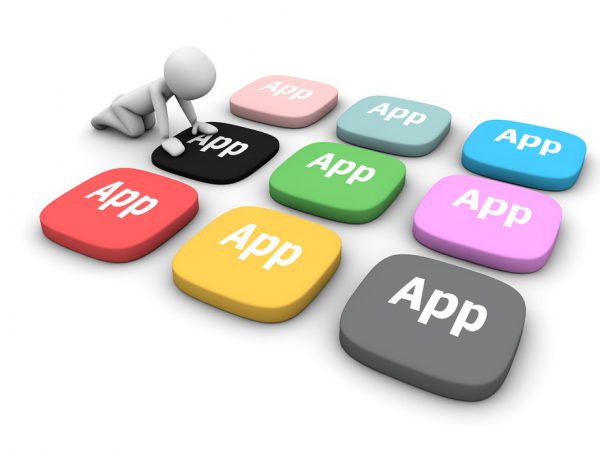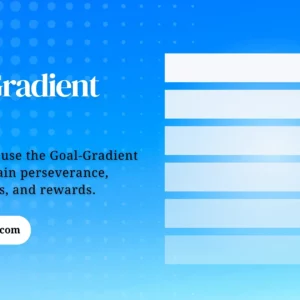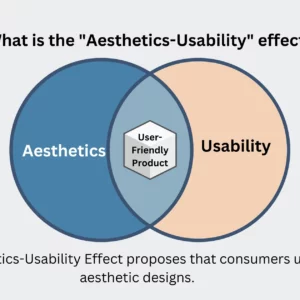Mobile applications have become vital tools in today’s digital landscape, pushing innovation in organizations and daily lives. In today’s digital age, where smartphones have become an essential part of our daily lives, the development of mobile applications has evolved into a dynamic and influential channel for innovation. The process of developing mobile apps has progressed from a specialized expertise to a critical requirement for organizations, entrepreneurs, and developers alike. If you’ve ever wondered about the steps to make an app, you’re about to start on an exciting adventure of creativity and problem-solving.
Creating mobile apps enables creative expression as well as issue resolution. This blog will help you translate your app concepts into effective, user-friendly experiences, allowing you to effectively navigate the dynamic arena of app production.
Influence of mobile apps
Nowadays, starting from ordering food to traveling we depend on apps. Earlier to order food we have to give a call to a home delivery restaurant and give the order. Here the problem arises where we couldn’t track our food, if the food was bad we couldn’t give the review, and neither could we get cash back for the bad quality of food. Now popular food apps like Uber Eats, Zomato, Swiggy, and Foodpanda, we are not only provide review facilities but also you get the option of tracking your food and if the quality of the food is not good enough then you can get a refund or a complimentary food. The same thing happens with shopping apps. Nowadays shopping malls do not have that amount of people since people nowadays believe in doing shopping online due to the reasons:
- Huge variety of products
- Very cost-effective
- Most of the shopping sites have cash back and return policies in case of any issues with the product.

Different Types of Mobile Apps:
There are different sorts of mobile applications. Each caters to a different set of requirements, interests, and capabilities. These apps have changed how we interact, work, entertain ourselves, and access information.
Here are some examples of mobile apps:
1. Native Apps:
Native apps software programs particularly function on a certain operating system or device. Unlike web apps or cross-platform apps, native apps are designed to take full use of a given system’s hardware and software advantages. This leads to a more smooth and efficient user experience. Shorter load times and improved performance characterize it. Expanded features such as access to device-specific capabilities like GPS, camera, and accelerometer. These apps are written in programming languages native to the device’s operating system. Swift and Objective-C for iOS and Java or Kotlin for Android are some of them. They may use the operating system’s advanced capabilities. Native applications remain popular in development. It is because of improved performance, broad feature set, and enhanced user experiences. You can relate it to Spotify, one of the most used apps.
2. Web Apps:
Web applications have transformed digital engagement. They’re adaptable. They operate immediately in web browsers without the need for downloads. They have become a daily need for things because of their ease of use. Email, social networking, and shopping are a few of them. Cross-platform compatibility is a significant benefit. It provides access to PCs, smartphones, tablets, and other devices. Developers profit from this as well. It is because they can develop code once and distribute it everywhere. Web applications make use of cloud computing. It allows for smooth server-side updates and upgrades. Without the need for manual upgrades, users always have access to the most recent features and security advancements. The examples range from Google Docs to Facebook.
3. Hybrid Apps:
Hybrid apps are a diverse approach to mobile app development. These include characteristics of both native and web applications. These apps run across various platforms. These are iOS, Android, and, in some cases, web browsers, utilizing a single codebase. They are often constructed with web technologies. These range from HTML, CSS, and JavaScript. Finally wrapped in a native container that allows them to be distributed through app stores. One of the key advantages of applications is their low cost. Developers create code once and distribute it across several platforms. It saves time and costs over building separate native apps for each operating system. Hybrid applications continue to be a popular alternative for organizations wishing to reach a large number of people while keeping development costs low. They achieve a mix of web development efficiency and native app performance characteristics. Instagram is a famous example of this.
4. Progressive Web Apps (PWAs):
Progressive online Apps (PWAs) represent a watershed moment in online development. These cutting-edge applications serve as a link between regular websites and native mobile apps. It integrates the best of both worlds. PWAs, with cross-platform compatibility run across several devices and operating systems. It removes the need for distinct app versions. This omnipresent accessibility broadens the reach of businesses and developers. PWAs put the user first. They provide an app-like interface with snappy animations, responsive layouts, and offline capability. The usage of service workers allows PWAs to cache key resources. It allows users to access and interact with the app. It is done even when there is no or limited network connectivity. This resilience is a game changer. Valid especially in areas where internet service is unpredictable. Google Maps is the most used example of this technology.
5. Augmented Reality (AR) Apps:
Augmented Reality (AR) apps augment the actual environment. They superimpose digital data such as photos, videos, or audio on top of it. These applications are becoming popular in a variety of industries. Gaming, retail, education, and healthcare, you name it and you will get it. Apps like Pokémon GO allow users to engage with virtual characters in real-world environments. AR apps in retail allow shoppers to see things in their surroundings before buying. AR makes learning more engaging in school. They bring historical events to life or assist in difficult scientific simulations. To work, most AR apps need a smartphone, tablet, or specialized gear such as AR glasses. AR apps are likely to become sophisticated and integrated into our daily lives as technology improves.
6. Virtual Reality (VR) Apps:
VR apps provide immersive digital experiences that separate the user from their surroundings. These applications are used in a variety of contexts. Gaming, education, healthcare, and social contact are among them. Gaming is still one of the most popular applications for virtual reality. Titles like Beat Saber and Half-Life: Alyx provide compelling experiences. Interactive learning experiences, such as historical walkthroughs or scientific simulations, are provided via educational applications. Healthcare uses VR applications for training simulations and therapeutic therapies. Users may meet and connect in virtual worlds thanks to social services like VRChat. VR apps often use specialized gear, such as the Oculus Rift, HTC Vive, or PlayStation VR. As VR technology advances, these applications are projected to grow more complex, providing ever more intriguing and immersive experiences.
Steps to Make an App:
Developing a mobile app entails multiple processes. It starts from conceptualization to development and implementation. Here’s a high-level overview of the procedure:
A. Idea and Strategy creation:
The development of an app’s idea and strategy are critical phases. Each contributes key parts to its success. The process of developing an idea includes identifying a specific problem or need that the app attempts to answer. It serves as the foundation of its concept. This phase comprises finding market gaps, performing research to assess current solutions, and envisioning novel features or techniques that distinguish the app.
Strategy creation, on the other hand, requires developing a detailed plan to lead the app’s development, launch, and growth. This includes meticulous market analysis to understand trends and competition. It defines the target audience, articulates a clear value proposition, and prioritizes features that align with the core idea. It has to design a user-centric experience, plan the monetization model, and outline a marketing strategy to generate anticipation and awareness.
B. Analyzing and Planning:
Analyzing and planning are the foundations of all successful activities, including app development. The analyzing phase entails acquiring and assessing critical information. These are the project needs, market dynamics, and feasibility factors. This provides a thorough grasp of the project’s scope and potential obstacles. Following that, during the planning phase, this information is synthesized into a well-structured roadmap. This roadmap details project objectives, deadlines, resources, and risk mitigation techniques. Together, evaluating and planning offer a strategic approach that increases the possibility of attaining project goals effectively and efficiently.
C. Working on UI/UX:
UI/UX work for app design is the delicate skill of converting ideas into seamless, user-centered digital experiences. As a UI/UX designer, the process begins with extensive user research. It involves identifying preferences, pain spots, and behavioral patterns. This crucial knowledge serves as the foundation for designing intuitive user interfaces. These designs blend beauty and usefulness. UI/UX designers work with teams to translate wireframes into visually appealing designs. They refine features to achieve the optimal balance. User flows, information hierarchies, and interactive components are fine-tuned with painstaking attention to detail. These factors guarantee a seamless and gratifying user experience. UI/UX specialists play a critical role in app design. They design meaningful experiences that resonate with users. Not only this, they promote engagement and forge a harmonic link between people and technology.
D. Developing the App:
The process of creating an app is a continuous journey. It involves thorough planning, development, and iterative refining. This complex process begins with envisioning the app’s goal, features, and target audience. After this, it moves on to planning the architecture and functionality. Skilled developers then use computer languages and frameworks. They turn these notions into concrete code, laying the groundwork for the app. Collaboration is essential among developers, designers, and stakeholders. They all work together to produce a unified user experience. Continuous testing, debugging, and optimization are critical to ensure app stability, security, and performance. Agile techniques lead the process throughout the development cycle. It allows for flexibility and adaptation when difficulties occur. This journey has resulted in an app that smoothly merges design and functionality. The app is ready to improve its users’ lives and deliver a practical answer to their requirements.
E. Testing for Quality Assurance:
Testing the app for Quality Assurance is a vital and in-depth procedure. It verifies the software’s stability, functioning, and user pleasure. This comprehensive activity consists of a series of methodical tests, simulations, and evaluations. All of them find and correct any anomalies, faults, or inconsistencies in the application. Quality assurance testers examine every part of the program. It is from the user interface and user experience to its performance under different situations. To assess the app’s compliance with desired functionality and industry standards, rigorous testing approaches used are: functional, usability, compatibility, and performance testing. QA not only improves the app’s stability and performance by submitting it to real-world scenarios and stress testing. It also protects against any interruptions, resulting in a polished and smooth user experience.
F. Deploying the App:
The app’s deployment signifies the culmination of development work and the start of its real-world adventure. This procedure entails the application’s flawless move from the development to live servers. It allows users to access it. Deployment has a sequence of planned activities. These are establishing servers, databases, and networking components to enable the app’s functions. Before the software goes live, developers check that all dependencies are satisfied, security measures are in place, and performance optimization is complete. Thorough testing confirms the deployment. It detects and fixes any last-minute issues that may develop. When everything is in order, the app is deployed to its target audience. Hence users can engage with the app and profit from its features. To ensure a seamless user experience and quick response successful app deployment involves a mix of technical skill, accuracy, and monitoring.
G. Monitor Performance:
Monitoring performance is a constant and necessary component of keeping an application healthy and successful. This proactive method entails ongoing observation. You have to analyze performance data to ensure the app’s optimal operation and user happiness. Response times, server utilization, memory consumption, and error rates are all parts of performance monitoring. By leveraging monitoring tools and techniques, developers and system administrators may discover and fix any possible bottlenecks, downtimes, or abnormalities that may impair the app’s performance. Real-time monitoring not only supports in maintaining a high-quality user experience but also in making informed decisions about expanding resources or optimizing code to meet rising user needs.
What is the role of Zasya Solutions in the digital marketing sector to clients?
Zasya Solutions completely understands that these applications are playing a huge role in the lives of people nowadays. Hence they are putting their prime focus on mobile applications.
But have you ever wondered how you can develop these apps? Nowadays, the desktop is taken over by mobiles. This is because the number of mobile users is a lot more than the number of desktop or computer users. Providing flawless, yet attractive practice on mobile is now additional significant than ever. It provides an accurate competitive advantage to businesses that get it correctly done. A great mobile app can help greatly in many ways. Zasya Solutions is known for its best services and hence it provides the best comfort to the customers. Focus on solving all the problems related to the marketing of the business. They design the best apps with the best experts in a way that you never regret.
Final Thoughts:
Learning how to develop mobile applications has been a fascinating and rewarding adventure. As technology advances, the options in the field of app creation become limitless. With the information and abilities you’ve received from this tutorial, you’re ready to begin your own app development adventures. Remember that in this changing sector, tenacity and inventiveness are your allies. Accept problems as learning opportunities and keep up with current developments. You may build applications that have a real influence on the lives of consumers and contribute to the ever-expanding world of mobile technology with devotion and inventiveness.






